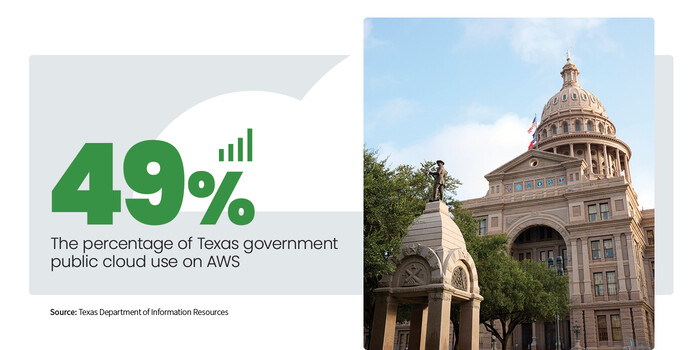Embracing Public Cloud to Enable Innovation
The department has evolved its services over time to include technology strategy and design services, application development, and managed security services. In 2017, DIR began offering public cloud services, starting with Azure and AWS, and recently added Google Cloud and Oracle Cloud. The goals are to avoid vendor lock-in, which limits technology choice, and provide access to the latest innovations and best-of-breed solutions.
“Texas is a big state, and we have a lot of government entities with varying missions. At DIR, we strive to always offer our customer agencies the choice of what would be best for their applications and ultimately, what would be the best value for Texans and the taxpayers of this state,” Crawford says.
Through the DCS program, public cloud use has climbed to 30% since 2017, with private cloud at 70%, Ward says. The program now serves 121 state and local government agencies and educational institutions, including 29 state agencies that are required by law to participate and 18 others that have joined voluntarily.
Agencies are increasingly adopting public cloud to modernize or build new applications, taking advantage of Platform as a Service and the ability to scale services up or down as needed, Ward says.
DIR offers four public cloud services to give agencies choice, because no two clouds are the same, she says. Their choices are based on the best fit for their application or their existing expertise.
“There are business and technology reasons why one platform would be better for a particular need,” Ward says. “It could be that an agency is an AWS shop or an Azure shop. That’s what they know, and that’s what they want to keep using.”

















